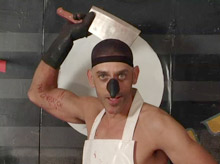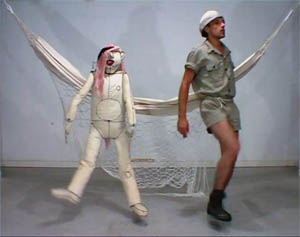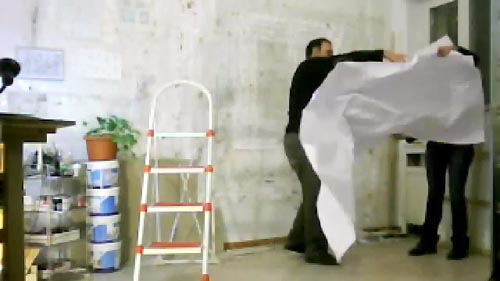
Time is speeding up (2016, 11MB, 1:00 min)
This is a beautiful piece, a distillation down to a minute of a three month installation by Ruth Catlow, artist and co-director of the marvellous Furtherfield.
She explains its premise and construction better than I can, so I’ll hand over to her:
This networked video performance and installation is about how life seems to speed up as we get older; based on the reflection that when I was one day old, a day was my whole life but on the second day one day was only half my life etc.
The work was commissioned for ‘We Are Not Alone’, an exhibition for 20-21 Visual Arts Centre, Scunthorpe, UK.
During exhibition opening hours between 23rd January -24th April 2016, viewers could watch a live looping video online. At the exhibition people could pose for the web cam, or might be caught looking at the video in which they were soon to be portrayed.
Using a computer programme called Geological Time Piece that I created with Gareth Foote a still webcam image was captured every 3-5 minutes during exhibition opening hours. The camera pointed at a wall in the gallery, upon which a changing text was displayed. The software added each image as a frame to a looping video, of fixed 3 minute duration. The frame density increased every 3 minutes, as each images was added to the video.
In the exhibition space full of movement – of light and shade and people coming and going – people could insert themselves into the video by standing between the webcam and the text. Over three months the human presences started to flicker and disappear and the moving image progressively conveyed a more geological sense of time, the arc of daylight moving through the space, the architecture, and other more static things came to dominate the image. The computer programme stopped running when the exhibition closed by which time the video contained over 3600 images. The final video runs for a minute at 60fps.








